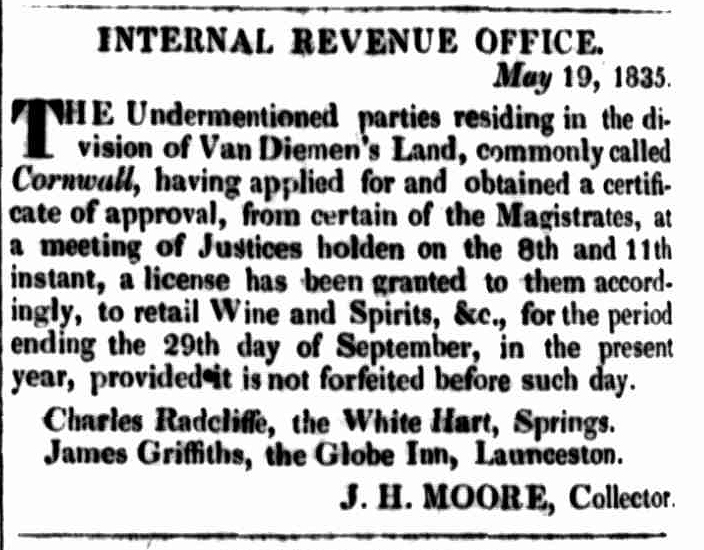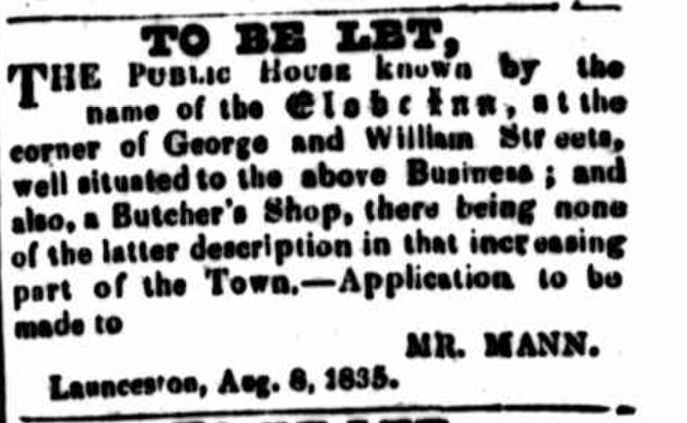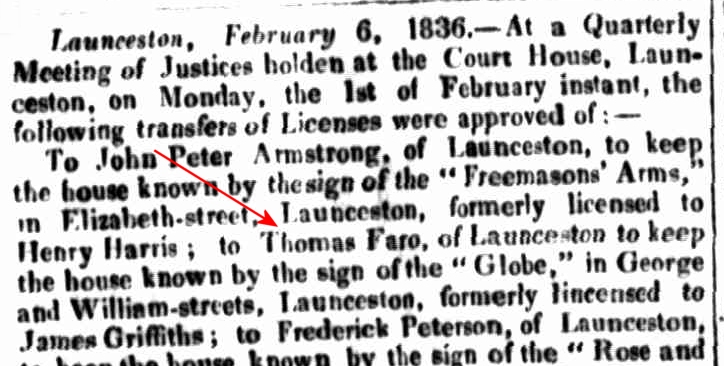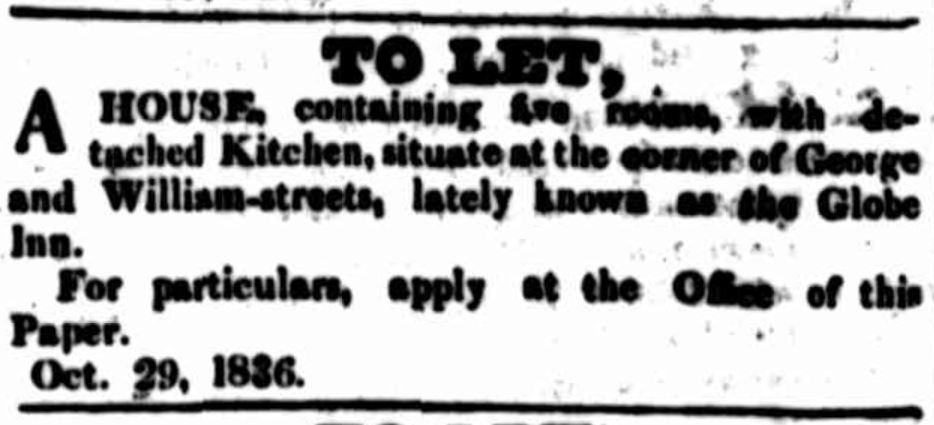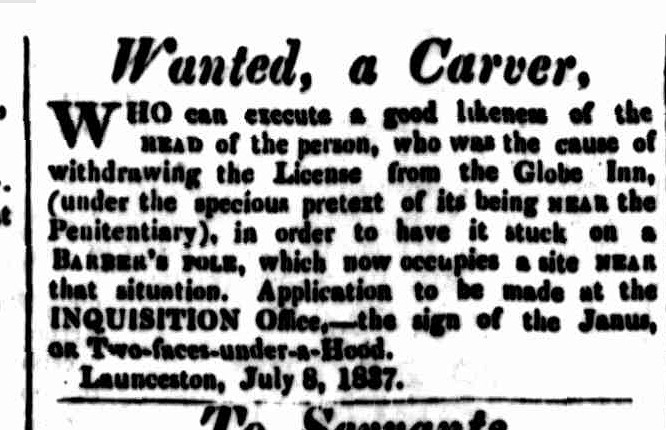39 William Street. Google maps.
Currently, a visitors centre for nearby Boags Brewery.
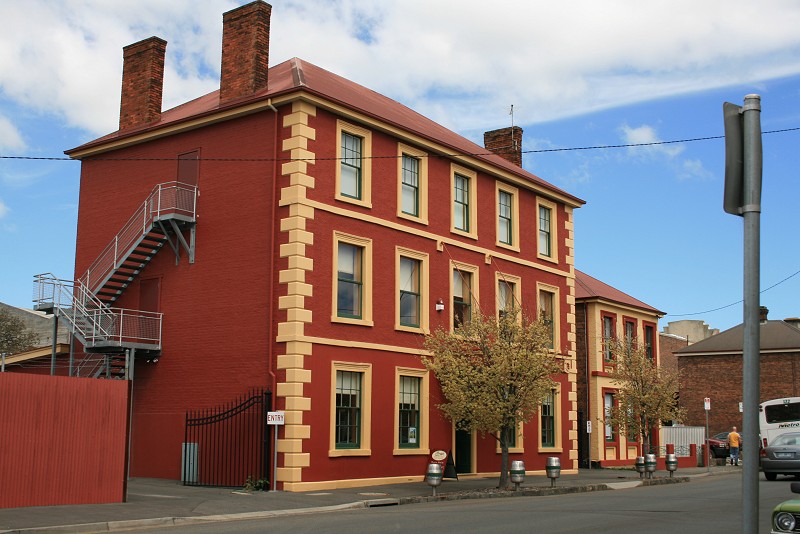
1831 George Radford, William Street
1832-33 George Radford, Lame Dog, William Street*
1833-41 George Radford, Golden Lion, William Street*
1841-44 George Radford Jnr, Golden Lion, William Street
1844-46 Richard Wicks, Golden Lion, William Street
1846-48 George Radford Snr, Golden Lion, William Street
1848-53 Mary Radford, Golden Lion, William Street
1853-61 John Bowater, Golden Lion, William Street
1862-63 James Ley, Golden Lion, William Street
1866-68 Thomas Flude, Golden Lion, William Street
1868 J. F. Hobkirk (Insolvent Estate)
1868-69 Frederick Jones, Prince Albert Hotel, William Street
1869 Arthur Jones, Prince Alfred Hotel, William Street
1869 William Fisher, Prince Alfred Hotel, William Street
1870 Robert Miller, Prince Alfred Hotel, William Street
1870 Medmer Lushington Goodwin, Prince Alfred Hotel
1871-74 Abraham Banks, Tamar Hotel, William Street
1874-89 Benjamin Crow, Tamar Hotel, Wellington St
1880-83 Steel Trail, Tamar Hotel, Wellington St
1883-89 Andrew Anderson, Tamar Hotel, William Street
1889-93 Edward Holehan, Tamar Hotel, William Street
1893-96 William Stephen Bassett, Tamar Hotel, William Street
1896-97 Vincent Warrington, Tamar Hotel, William Street
1897 Michael Tierney, Tamar Hotel, William Street
1898-1900 William Douglas Burns, Tamar Hotel, William Street
*I’m not sure if the Lame Dog became the Golden Lion, but in October 1833 Radford gives his address at “Lame Dog, William Street” and two months later, he’s granted a licence for the Golden Lion, so even if he constructed a new building to be the Lion, there is a continuity of ownership.
——————————
From a lecture by Mr. E. Whitfield, 1897
At the foot of George-street there was a ferry, and near that ferry stood another public house. It was named the “Lame Dog.” Poor doggie, is depicted on the signboard, was a deplorable looking object with oneleg in a sling, and beneath were the lines:
“Step in my friends and rest awhile,
And help a lame dog over the stile.”
The Tamar Hotel, in William-street, was once known as the “Golden Lion,” but prior to that it went by the name of the “Sawyers’ Arms.” Here [on the sign] two able-bodied sawyers were seen working at a pit, and the words beneath were-“Halt, mate, let’s drink.”
Launceston Examiner, 6 February 1897
From response to Mr Whitfield’s lecture by William King:
I should like as briefly as possible to point out where Mr. Whitfeld is at sea re public houses. In the first place he says the Tamar Hotel was at one time the Sawyers’ Arms. Now, Sir, a man named Radford, who had been a soldier, built this house, obtained a license, and named it the Golden Lion. I am quite sure it was not at any time the Sawyers’ Arms. The two-story building opposite the Park gates, with a verandah top and bottom, was the Sawyers’ Arms, kept by Antoni Martini. In the year 1842 he let it to a man named Clark, who was a leading cricketer in those days; and he removed the license to the Royal Oak, corner of Brisbane and Tamar streets.
Launceston Examiner, 17 July 1897
Read more



